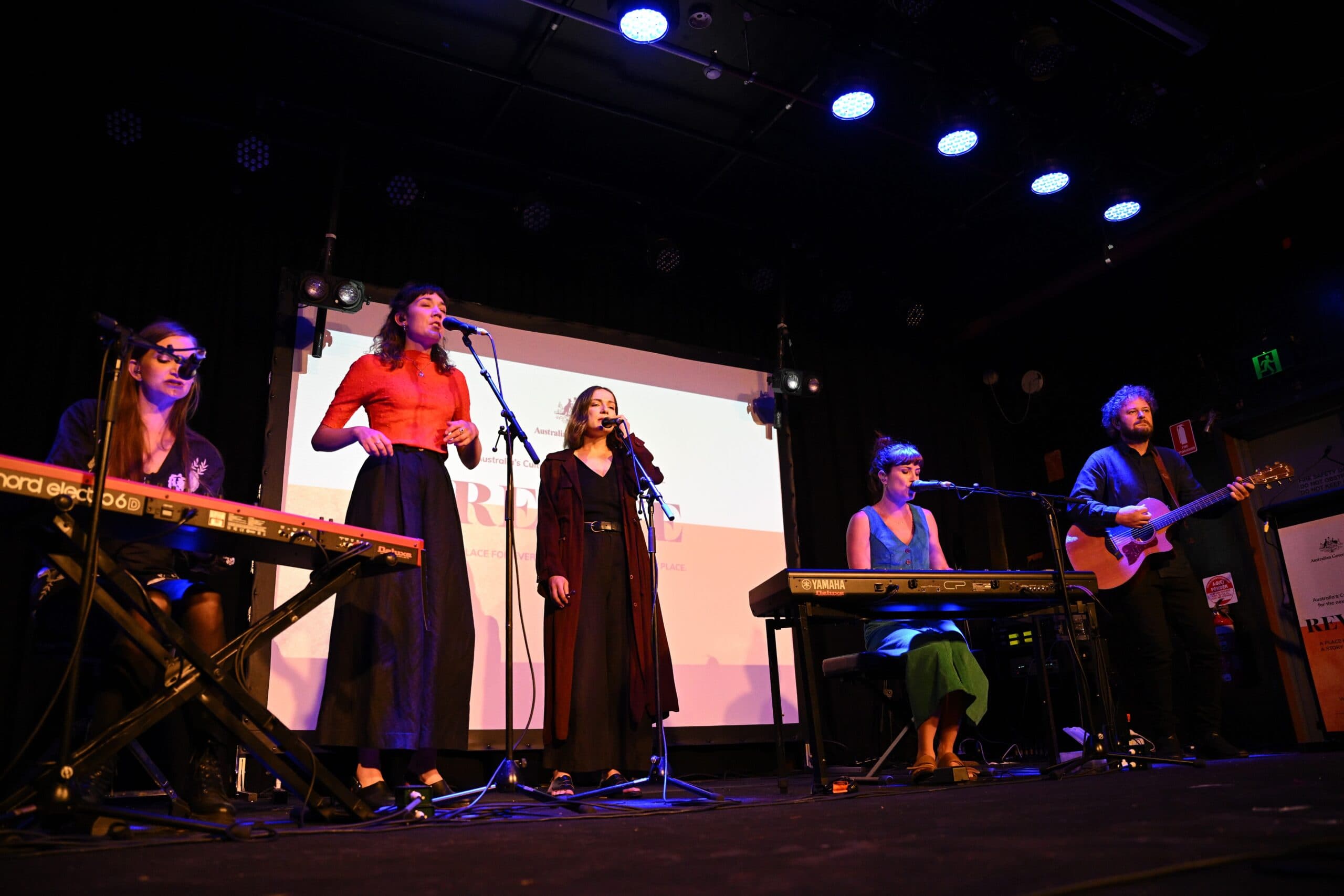A submission to an inquiry into the decline of the arts sector recommends $200 vouchers for young people to support artists, writers, musicians and other creative Australians. The sector needs it.
Fri 19 Sep 2025 07.00

AAP Image/James Ross
A submission to an inquiry into the decline of the arts sector recommends $200 vouchers for young people to support artists, writers, musicians and other creative Australians.
The New South Wales government sought submissions ahead of next week’s Art of Tax Reform summit, seeking ideas to help the sector.
In recent years, hundreds of live music venues have closed, a string of once-popular festivals have been cancelled, and artists continue to be desperately underpaid.
Surging inflation has led to Australians spending significantly less on things like attending galleries, concerts, festivals and venues.
“The cost-of-living crisis has had a devastating impact on the arts,” said Skye Predavec, Anne Kantor Fellow at The Australia Institute and co-author of the submission.
“After paying their bills, rent or mortgage, buying food and other essentials, Australians have had very little left to spend on the things which make them happy.”
Research shows that nearly three quarters of Australians believed the arts had improved their quality of life during the COVID19 pandemic.
In 2021, the NSW government introduced $200 Dine and Discover vouchers, to help cafes, bars and cultural institutions survive after a string of devastating lockdowns. It reportedly injected a billion dollars into the state’s economy, with more than 20 million vouchers used.
The submission says youth cultural passes – run along similar lines to the Dine and Discover scheme – have been popular and successful overseas.
“Around the world, an increasing number of countries are introducing schemes in which young people are granted money to spend on arts,” said Skye Predavec.
“Youth cultural passes are a proven, effective way to increase engagement with the arts.”
Australia Institute polling shows that four in five young Australians (80%) would increase the number of music events they attend if a $200 voucher was available.
With approximately 330,000 18-year-olds in Australia, this would cost the Australian government approximately $66 million.
Given that Australia’s public spending on ‘cultural services’ is well below the OECD average, this would be a cost-effective way to support the sector.
“In 2020, the art sector contributed almost $15 billion to the Australian economy and employed around 200,000 people. For every million dollars in turnover, nine jobs were supported. That’s nine times more than the construction industry,” Ms Predavec said.
The Australia Institute submission also looked at ways for state governments to raise more revenue, so they could afford to support the arts.
When the GST was introduced just over 25 years ago, it was touted as the key source of revenue for states.
However, GST revenue has failed to grow over time as expected. If it had, it would have raised hundreds of billions of extra dollars, meaning state governments would not have had to slash arts funding so deeply.
The submission also suggests raising coal royalties and ending fossil fuel subsidies to boost state revenue.
It recommends the introduction of a book bounty, which is a government contribution to help with the cost of producing and printing books. A federal book bounty was in place for 28 years before being scrapped by the Howard government.
And finally, the submission suggests making art prizes and grants tax-free, which would be comparatively cheap, but could make a huge difference to the ability of artists to produce more.
“While it may be possible to move other sectors of the Australian economy offshore, Australian culture can only be produced in Australia,” said Ms Predavec.
“If we don’t support the arts now, the decline we’ve seen since COVID will continue, perhaps irreversibly in some areas.”